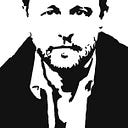Jung’s Search for his Personal Myth and Why It Always Confused Me




I’ve heard and read the story of Jung’s search for his personal myth dozens of times — his personal break from Freud, the toll it took on his mindset, his introspective look, through his memories, back to his childhood, and his eventual building of Bollingen Tower in Switzerland, on the shores of Lake Zurich. The completion of the castle is held up as Jung discovering his personal myth and overcoming the sense of purposelessness and lack of meaning he had felt.
But, if I’m being honest, it’s always kind of confused me.
How did building a castle, even if inspired by his childhood interest, represent the culmination of his life — a life, when viewed from the outside, at least, seemed centered around archetypal meanings behind religion, esoteric insights into the way the world works, and the vast power of the human subconscious.
I mean, not to be dense and shallow, but the whole castle-as-personal-myth bit would make more sense to me if Jung had made a name for himself in stone masonry — not psychology.
But maybe dense is the best description for my examination of this story — Why, when looking at Jung, a man whose work was so centered on the metaphors and allegories that make up our lives and the world, would I not allow for the existence of metaphor and allegory in his own personal myth.
I’ll explain.
First up, let’s define, “personal myth.” A personal myth represents our story about our lives and the world. When our life, as lived, thus far, is taken into account along with our tendencies, our proclivities, and our passions, if viewed from enough distance, begins to take on a shape. Schopenhauer said it was as if our life had a plot and was being written for us. When we begin to take notice of this plot, we are beginning to notice our personal myth
Jung, it turns out, saw the tower at Bollingen as an allegory for his story so far. He wrote it was a “representation in stone of my innermost thoughts and of the knowledge I had acquired… a confession of faith in stone.”
The castle revealed his personal myth to him because it was a physical representation of his inner world to that point. And once built, it became a home for his family, and a battery that powered the work he would go on to accomplish in the world of analysis. He wrote about his time there in Memories, Dreams, And Reflections, “I am in the midst of my true life, I am most deeply myself.”
When looked at that way — when the castle is seen not just as a literal structure, but as a metaphor for Jung’s own psyche and a launching pad for his future, it suddenly doesn’t seem so confusing anymore.
